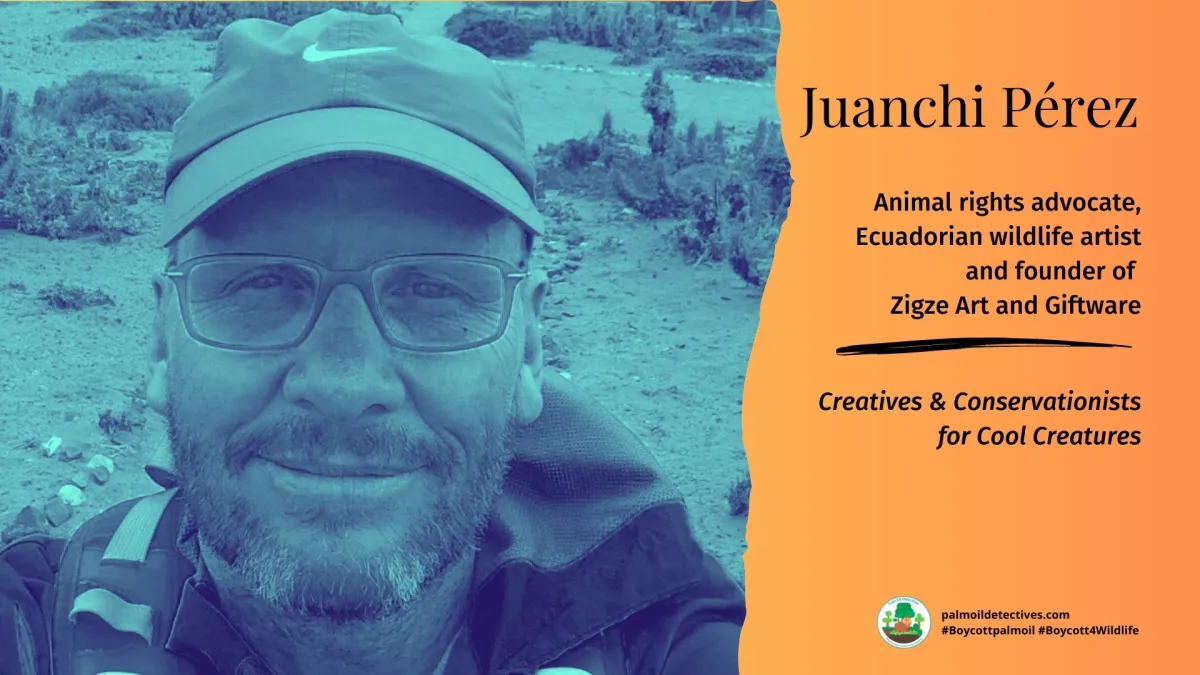Butterfly Viper Bitis nasicornis
Vulnerable
Extant (resident)
Angola; Cameroon; Central African Republic; Congo; The Democratic Republic of Congo; Côte d’Ivoire; Equatorial Guinea; Gabon; Ghana; Guinea; Guinea-Bissau; Kenya; Liberia; Nigeria; Rwanda; Sierra Leone; South Sudan; Tanzania, United Republic of Togo; Uganda.
Presence Uncertain
Zambia
Although they possess one of the most potent venoms of all snakes in Africa, Butterfly Vipers are surprisingly placid and won’t attack unless provoked or threatened. They are known by several common names: Rhinoceros viper, River Jack, the Rhinoceros horned viper and the Horned puff adder. They are appreciated for their vividly coloured markings that keep them camouflaged on the forest floor.
The Butterfly #viper is a stunning #snake in #Africa threatened by #deforestation. Raise your voice for beautiful #African #vipers by saying no to #palmoil #deforestation #Boycottpalmoil #Boycott4Wildlife
Tweet

The forest is highly fragmented and not well-protected in Rwanda, where Butterfly vipers live and are likely to be at risk from deforestation. This species has declined significantly in a protected area (Reading et al. 2010), which could be due to exploitation or another unknown threat.
IUCN Red LIST
Appearance & Behaviour
The stunning dragon-like viper species Bitis nasicornis has prominent nasal ‘horns’ and striking colour patterns consist of 15-18 blue or green markings along with a bright yellow line down the centre. Dark crimson triangles adorn their flanks and are bordered with vibrant green or blue. Female vipers grow larger than males and can reach 110 cm in length.

They are primarily nocturnal and solitary and although venomous, they are generally placid in nature. They dwell in the dappled sunlight of the forest floor, which provides excellent camouflage. Although ground-dwelling, they have a prehensile tail which enables them to climb trees and thickets.
Powerful swimmers, they often hunt by ambush by waiting silently and motionless until the right moment to strike. Rhinoceros vipers have a loud hiss that sounds like a shriek – this is said to be the loudest hiss of any African snake.
Threats
The Rhinoceros viper faces many threats, these include:
- Collection for the international pet trade.
- Human persecution and poaching for human consumption.
- Deforestation for palm oil, coffee and cocoa agriculture.
- Deforestation for mining.
- Pollution run off from agriculture.


Venom
The Butterfly viper’s venom is particularly potent and only a small dose is enough to be deadly. The venom is both neurotoxic and hemotoxic meaning that it destroys tissue, blood vessels and adversely affects the nervous system of the victim. The fangs are hollow and when in use they deeply penetrate the skin of the victim with venom flowing into the wound. When not in use, the viper’s fangs fold into the roof of their mouth.
Their geographic range makes them isolated and therefore few human bites are officially recorded. Reported symptoms post bite include massive swelling and skin necrosis. In America, one instance of a pet Butterfly viper biting his own led to the owner’s death.
Habitat
Butterfly vipers are found all over the tropical equatorial countries of Africa in West Africa and central Africa and western Kenya. Their habitat range has been enormously reduced by deforestation for agriculture including palm oil, cocoa and coffee, as well as mining and the associated pollution run-off this causes.
Diet
They are carnivores and feed opportunistically on small mammals, reptiles and fish by laying in wait and then attacking with a sudden unexpected strike. They have been known to consume rodents, toads, frogs and fish.

Mating and breeding
In West Africa they give birth during the during the rainy monsoon season of March-April. In eastern African nations they breed throughout the entire year. They give birth to live young and produce around 6 to 38 snake neonates.
The Rhinoceros viper/Butterfly viper has no formal protections in place.
The #Boycott4Wildlife offers a way for consumers to fight back against palm oil deforestation and other forms of animal cruelty and slavery. If you wish to raise your voice for Butterfly Vipers, join the #Boycott4Wildlife.
You can support this beautiful animal
There are no known formal conservation activities in place for this animal. Make sure that you #Boycottpalmoil and #Boycott4Wildlife in the supermarket and raise awareness of the plight of this beautiful animal in order to support their survival! Find out more here
Further Information
Penner, J., Rödel, M.-O., Luiselli, L., Trape, J.-F., Spawls, S., Malonza, P.K., Beraduccii, J., Chippaux, J.-P., LeBreton, M., Kusamba, C. & Gonwouo, N.L. 2021. Bitis nasicornis. The IUCN Red List of Threatened Species 2021: e.T13300910A13300919. https://dx.doi.org/10.2305/IUCN.UK.2021-3.RLTS.T13300910A13300919.en. Accessed on 12 September 2022.
Bitis Nasicornis on Wikipedia
Butterfly Viper on Animalia.bio


How can I help the #Boycott4Wildlife?
Contribute in five ways
1. Join the #Boycott4Wildlife on social media and subscribe to stay in the loop: Share posts from this website to your own network on Twitter, Mastadon, Instagram, Facebook and Youtube using the hashtags #Boycottpalmoil #Boycott4Wildlife.
2. Contribute stories: Academics, conservationists, scientists, indigenous rights advocates and animal rights advocates working to expose the corruption of the palm oil industry or to save animals can contribute stories to the website.
3. Supermarket sleuthing: Next time you’re in the supermarket, take photos of products containing palm oil. Share these to social media along with the hashtags to call out the greenwashing and ecocide of the brands who use palm oil. You can also take photos of palm oil free products and congratulate brands when they go palm oil free.
4. Take to the streets: Get in touch with Palm Oil Detectives to find out more.
5. Donate: Make a one-off or monthly donation to Palm Oil Detectives as a way of saying thank you and to help pay for ongoing running costs of the website and social media campaigns. Donate here








Very good article detective.
LikeLiked by 1 person
Very welcome dear friend glad you enjoyed it!
LikeLike
Thanks dear friend….appreciate it
LikeLike